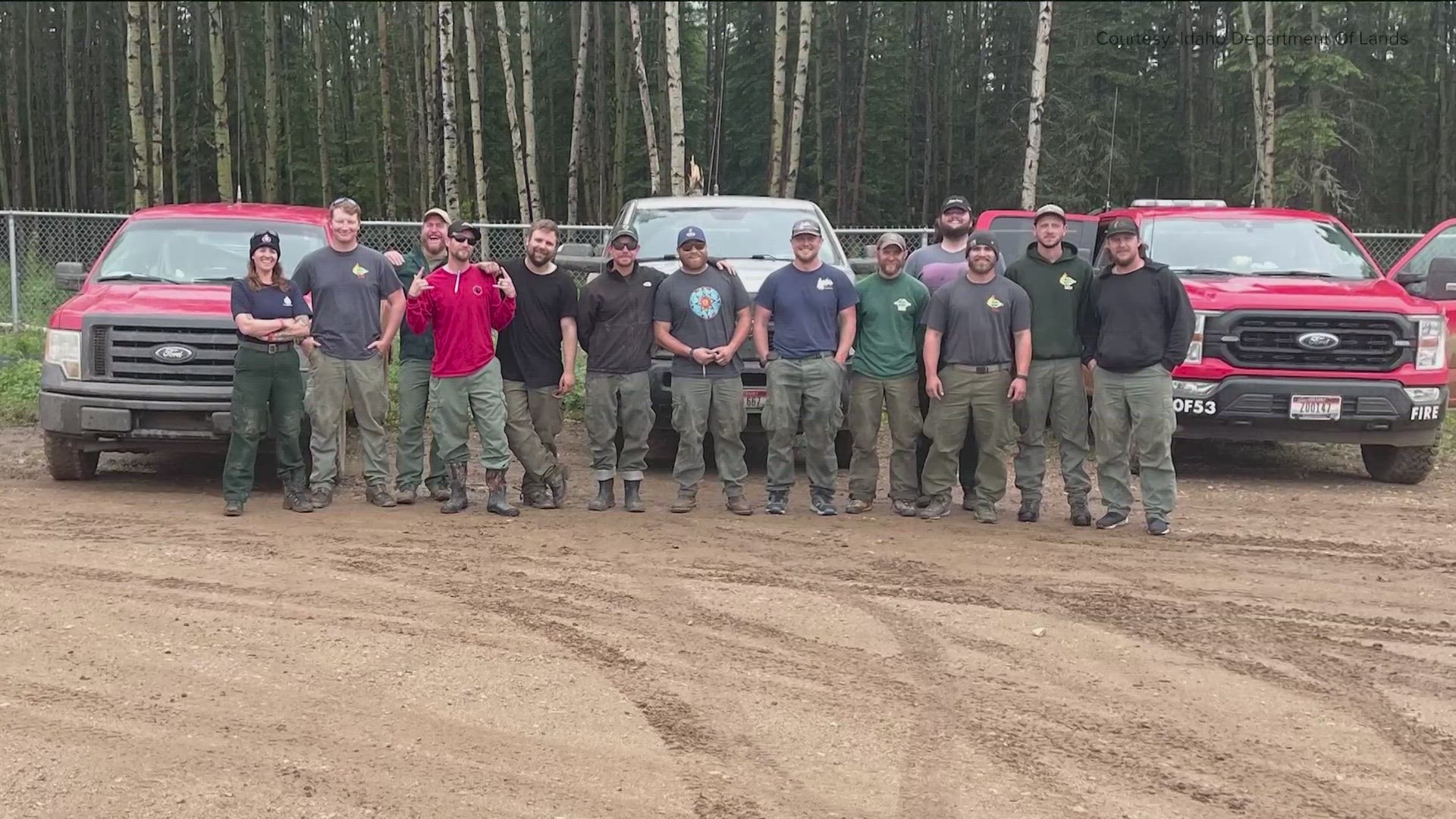ALBERTA, Canada — Wildfires continue to burn all across Canada. The official snapshot of the situation gives you an idea, it’s west to east, north to south.
With such a heavy fire presence across the great north crews from around the world are teaming up to help the Canadians.
“I got back from a fire and my assistant was like, don't be mad at me. You're leaving tomorrow. And I just got told that morning that we rostered the crew to go to Canada,” said Jasmine Chowning a member of the Idaho Department of Lands Kootenai Valley team.
The team went straight up north to Alberta, Canada. The team landed at Chipewyan Lake fighting the lightning caused Carrot Lake Fire which has grown to more than 20,000 acres.
“We were ready to go as soon as we got there. We got rained out the first two days. They attached us to the Carrot Lake fire up in the Chipewyan Lake District. With how wet the ground stays, it's very impressive how much it still burns,” Chowning said. “You got a foot and a half of depth. And the first eight inches are saturated with water. You can squeeze it and ring it out, but it is still burning underneath.”
Those conditions are very different from what Idaho firefighters usually encounter. The duff layer, as it’s called, is a layer of partly decayed organic material that collects on the forest floor.
“It feels like you're walking on clouds, like pillows. I mean, super springy, a lot of mud. Your boots get caked up really fast. There's a lot of good clay out there,” Chowning said.
The team of 13 IDL staffers focused on helping to protect the village around Chipewyan Lake. Roughly 200 people live in the village, they’ve been evacuated for weeks. IDL’s crew secured homes, checking to make sure burned areas were cold to the touch, a sign that reignition is low.
Chowning specifically had quite a trip, stepping into a new role. She was dispatched to the Heli base because of her experience working with a Helitak team. Long story short, she ended up as the Heli base manager where she was in charge coordinating 15 aircraft. Chowning calculated plans for people, equipment, and water drops.
“Tying in with those locals, then getting an Australian team as well as a Tasmanian crew who traveled with the Aussie team. So, we went from learning the Canadian way of doing things, to the Australian ways of doing things. All that differed verbiage in a 14-day period,” Chowning said.
The work and the conditions are tough as firefighters continue to work across Canada. There is a silver lining Jasmine found, fire teams from around the world get it.
“It's not it's not just your region. It's not just your state. It's worldwide. You instantly bond with people because you're all out there doing the same job. You know, it might be slightly different from spot to spot, but we're all doing the same thing and do it for a reason,” Chowning said.
Join 'The 208' conversation:
- Text us at (208) 321-5614
- E-mail us at the208@ktvb.com
- Join our The 208 Facebook group: https://www.facebook.com/groups/the208KTVB/
- Follow us on Twitter: @the208KTVB or tweet #the208 and #SoIdaho
- Follow us on Instagram: @the208KTVB
- Bookmark our landing page: /the-208
- Still reading this list? We're on YouTube, too

